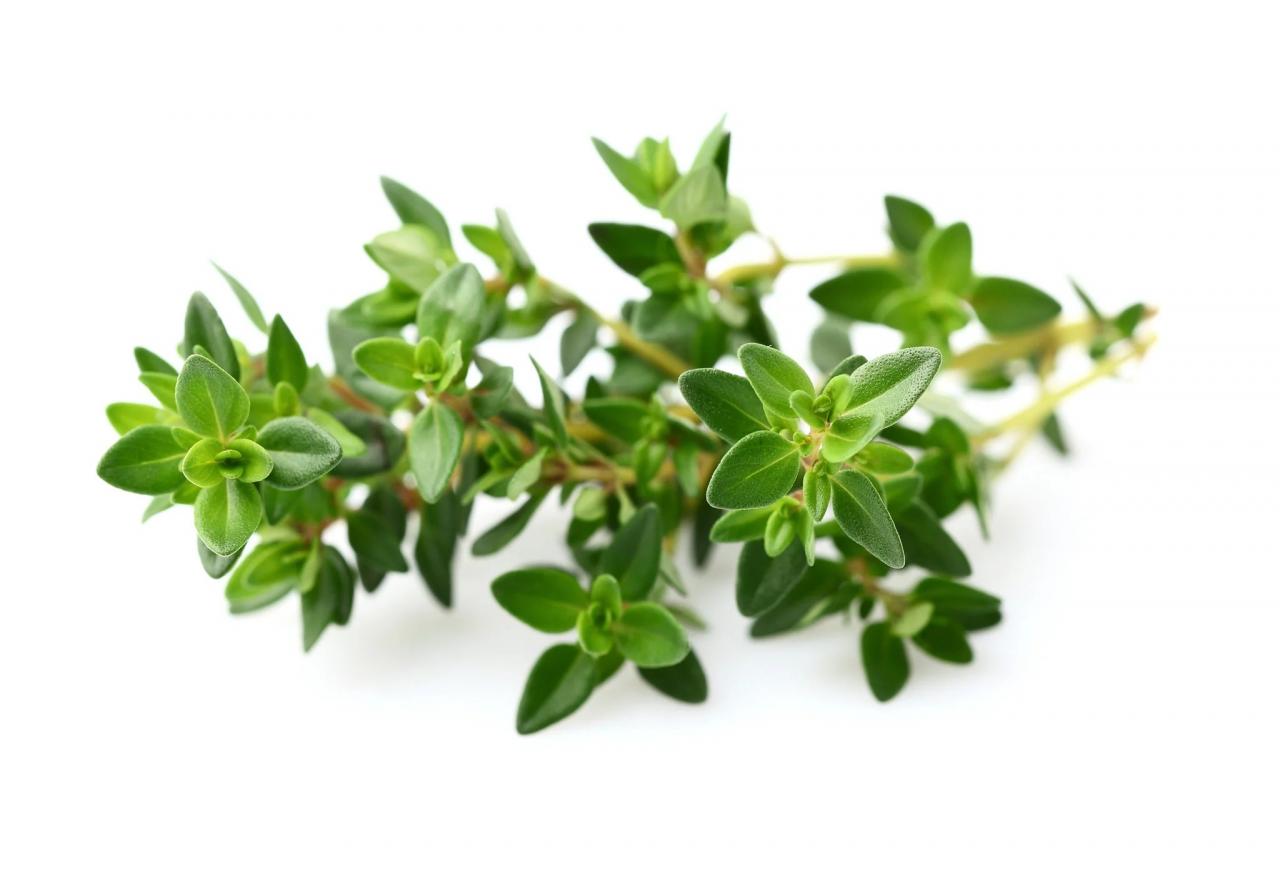Discover the extraordinary benefits of thyme leaves, a culinary and medicinal herb revered for its distinct flavor, therapeutic properties, and nutritional value. From enhancing culinary creations to combating ailments, thyme leaves offer a myriad of benefits that will captivate your senses and nurture your well-being.
Thyme leaves, with their earthy, slightly peppery flavor, have long been a staple in cuisines worldwide, adding a touch of aromatic complexity to dishes ranging from hearty stews to delicate desserts. But beyond their culinary prowess, thyme leaves hold a wealth of medicinal properties, boasting antibacterial, antifungal, and antioxidant compounds that have been traditionally used to treat a variety of health conditions.
Culinary Uses of Thyme Leaves
Thyme leaves possess a distinct earthy, minty, and slightly peppery flavor that complements various cuisines. Their versatility extends from marinades and sauces to garnishes, enhancing the taste of dishes worldwide.
- Marinades:Thyme leaves add depth to marinades for meats, poultry, and fish, infusing them with a subtle yet flavorful aroma.
- Sauces:Thyme leaves enrich sauces with their herbaceous notes, complementing cream sauces, tomato sauces, and reductions.
- Garnishes:Sprinkled over salads, soups, and grilled dishes, thyme leaves provide a vibrant green accent and a burst of fresh flavor.
Medicinal Properties of Thyme Leaves

Traditionally used in herbal medicine, thyme leaves contain active compounds such as thymol and carvacrol, which possess antibacterial, antifungal, and antioxidant properties.
- Antibacterial:Thyme leaves have been shown to inhibit the growth of harmful bacteria, including Staphylococcus aureus and Escherichia coli.
- Antifungal:Studies suggest that thyme leaves may combat fungal infections caused by Candida albicans and Aspergillus species.
- Antioxidant:Thyme leaves contain antioxidants that protect cells from damage caused by free radicals.
Nutritional Value of Thyme Leaves
Thyme leaves are a rich source of vitamins, minerals, and antioxidants. They contain significant amounts of vitamin K, vitamin C, iron, and manganese.
| Nutrient | Amount per 100g |
|---|---|
| Vitamin K | 139% DV |
| Vitamin C | 16% DV |
| Iron | 18% DV |
| Manganese | 23% DV |
Regular consumption of thyme leaves may contribute to overall health and well-being.
Cultivation and Harvesting of Thyme Leaves
Thyme plants thrive in well-drained soil and full sun. They can be grown from seeds or cuttings and require minimal maintenance.The optimal time to harvest thyme leaves is during the summer months when they are at their peak flavor and potency.
Cut the stems just above the leaf nodes and remove the leaves for use.To preserve their quality, thyme leaves can be dried and stored in airtight containers.
The therapeutic properties of natural ingredients have been widely recognized. For instance, neem leaves have been found to exhibit hypoglycemic effects, offering potential benefits for individuals with diabetes ( benefits of neem leaves for diabetes ). Moreover, cassava leaves, when combined with milk, have demonstrated anti-inflammatory and antioxidant properties.
Similarly, hibiscus leaves have been shown to promote skin health due to their rich flavonoid content ( benefits of hibiscus leaves for skin ). Additionally, pineapple leaves tea has been found to possess anti-inflammatory and diuretic effects, contributing to overall well-being ( benefits of pineapple leaves tea ).
Thyme Leaves in Traditional Medicine: Benefits Of Thyme Leaves
In traditional medicine, thyme leaves have been used to treat a variety of ailments.
- Respiratory Conditions:Thyme leaves have been traditionally used to relieve coughs, sore throats, and congestion.
- Digestive Issues:Thyme leaves may aid in digestion and alleviate gas and bloating.
- Skin Conditions:Thyme leaves have been used topically to treat wounds, burns, and skin infections.
In many cultures, thyme leaves are associated with strength, courage, and purification.
Hibiscus leaves are widely recognized for their potential benefits to skin health, including reducing inflammation and improving collagen production ( benefits of hibiscus leaves for skin ). Additionally, neem leaves have been studied for their potential in managing diabetes, possibly by lowering blood sugar levels ( benefits of neem leaves for diabetes ).
Furthermore, cassava leaves, when combined with milk, have been traditionally used for various health purposes, including promoting bone health and boosting the immune system ( benefits of cassava leaves and milk ). Pineapple leaves, on the other hand, have been investigated for their potential benefits in weight management and reducing inflammation ( benefits of pineapple leaves tea ).
Final Wrap-Up
Incorporating thyme leaves into your diet and medicinal practices can unlock a treasure trove of health benefits. Whether you sprinkle them on roasted vegetables, brew them into a soothing tea, or use them as a natural remedy for common ailments, thyme leaves are a versatile and valuable addition to your culinary and medicinal repertoire.
So, embrace the culinary delights and medicinal wonders of thyme leaves, and experience the transformative power of this ancient herb.
FAQ Compilation
What are the key nutrients found in thyme leaves?
Thyme leaves are rich in vitamins A, C, and K, as well as minerals such as iron, calcium, and potassium.
Can thyme leaves help boost the immune system?
Yes, thyme leaves contain thymol, an active compound with antibacterial and antifungal properties that can help strengthen the immune system.
How can I incorporate thyme leaves into my diet?
Thyme leaves can be used fresh or dried in a variety of dishes, including soups, stews, salads, and marinades.

